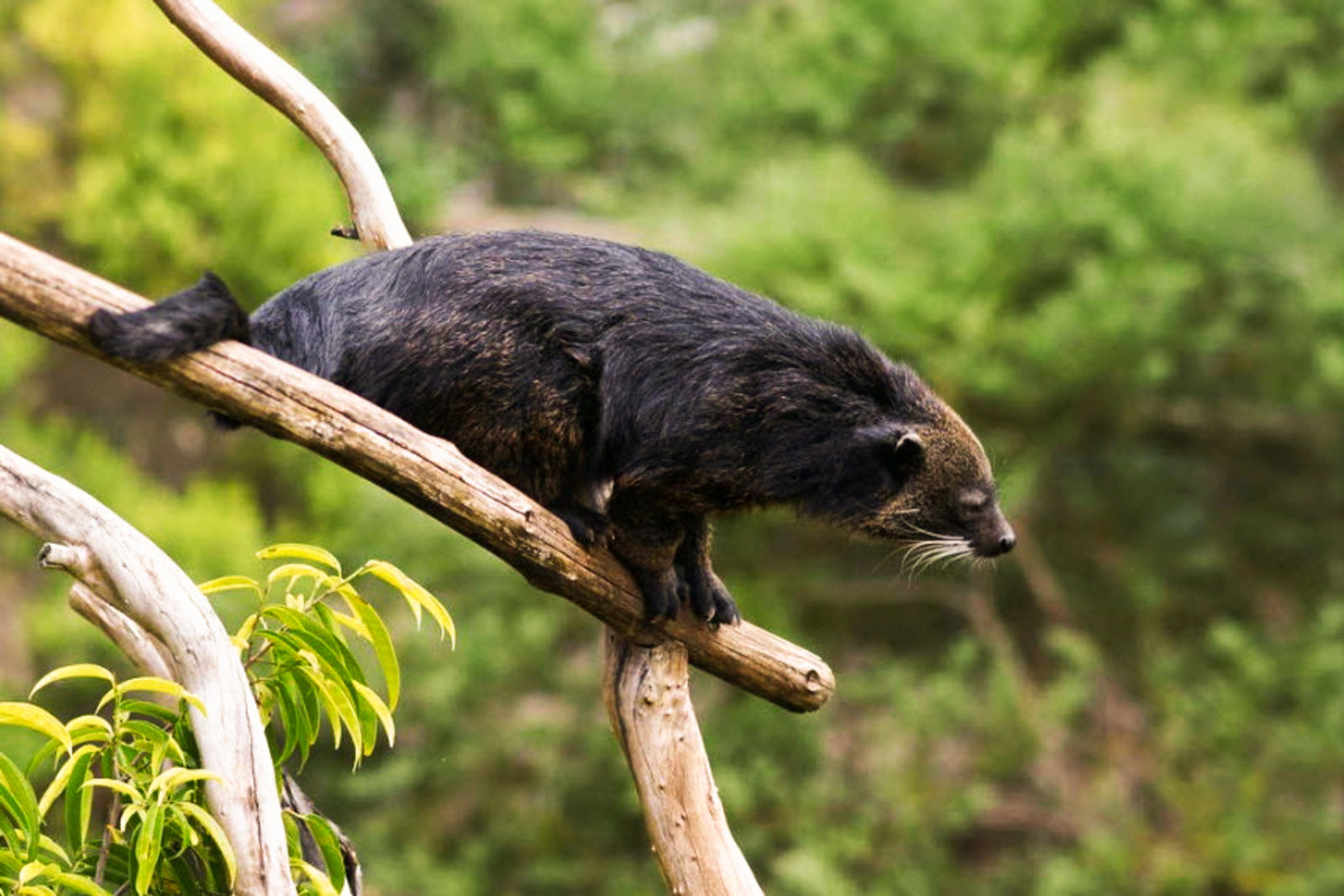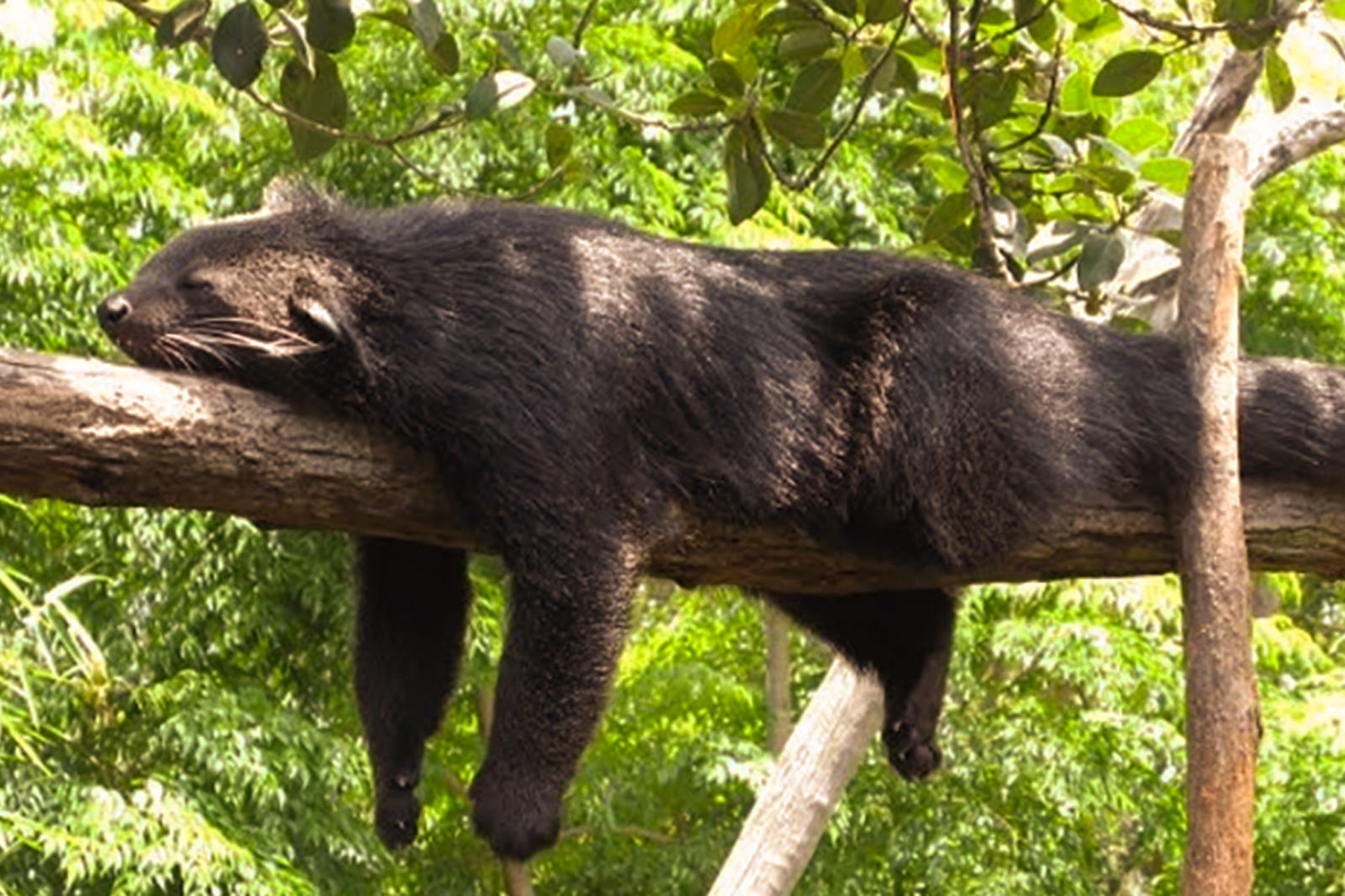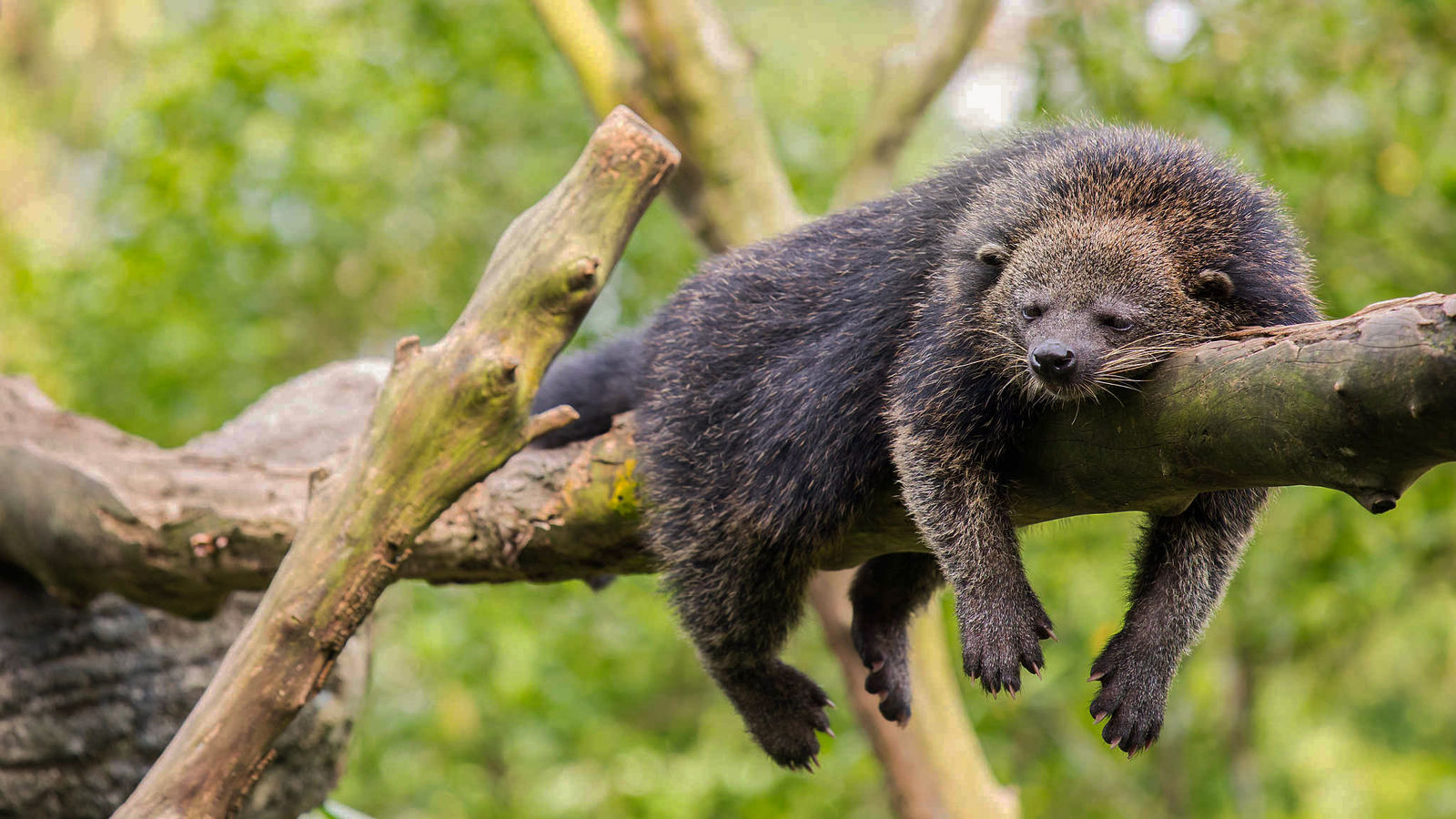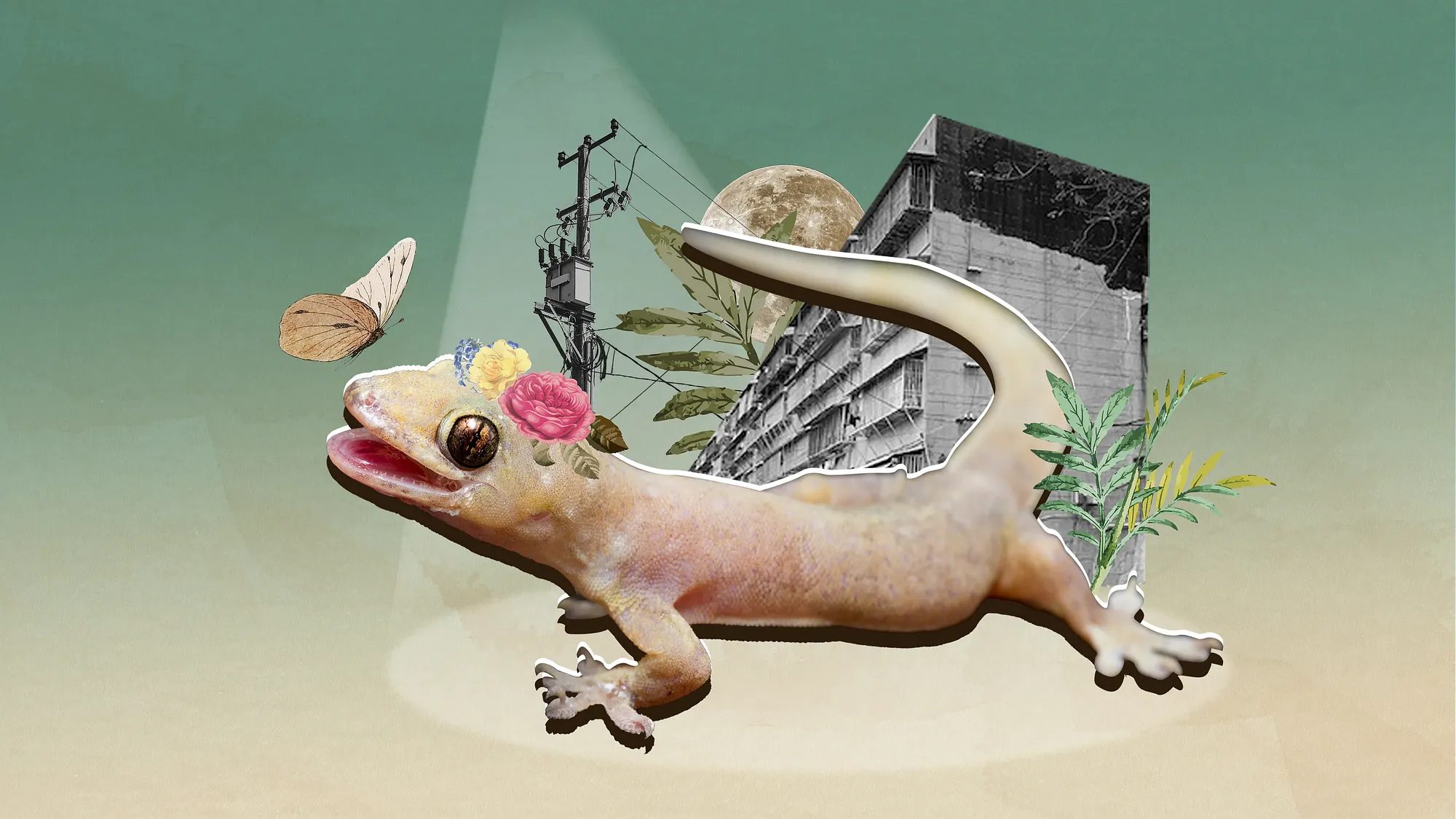I won’t bury the lede. If you are wandering Vietnam’s jungles and suddenly get a whiff of an odor that transports you to the entrance of a CineStar movie theatre, don’t ready yourself for another clichéd Marvel flick. Instead, look into the trees for a cầy mực (binturong).
Their pee smells like buttered popcorn.
It’s true. Cầy mực pee smells exactly like buttered popcorn thanks to its concentration of 2-acetyl-1-pyrroline, which is the same chemical compound produced by the sugars and amino acids found in corn when exposed to high temperatures. Cầy mực squat down to pee, which saturates their shaggy legs and tails with urine. They thus leave a scent trail through the forest to mark their territory and communicate with other binturongs — whether saying “stay the hell out of here,” or “I’m ready to get it on.”

Fun Fact
Scientists are baffled as to how cầy mực can create the smell, since their bodies cannot produce the high heat needed for the chemical reaction. As Christine Drea, a professor of evolutionary anthropology at Duke, said when summarizing a study she led on the issue: "How does this animal make a cooking smell, but without cooking?"
Everyone says they want a tail, but what they really mean is that they want a prehensile tail, because if you can’t use your tail to grip objects, hang from light poles, or smack people upside the head, what is the point? A tail that simply dangles limply behind you isn’t worth the cost of the custom pants you’d need to wear. But you’re out of luck, because nature doesn’t like giving out prehensile tails to animals that eat meat. There are only two with that privilege: the kinkajou and the cầy mực.
They are somewhat loafing, almost clumsy creature.
Despite having a tail that is strong and flexible enough to grasp, don’t picture cầy mực performing gibbon-esque leaps and dazzling lunges between leafy limbs to stalk prey. In fact, to move between trees, a cầy mực must climb down all the way to the forest floor, shuffle a few steps, and climb up a new trunk. They are a somewhat loafing, almost clumsy creature, which means they rarely have a chance to nab the birds, lizards, and rodents it hungers for, and must settle for bananas, mangos, and grubs.
And once it has gorged itself, it hauls its 17-kilogram body through the canopy to find a suitable branch where it can wrap its tail around and sprawl its shaggy body out for a nap, looking like an errant coma plopped into the middle of a sentence one can barely muster up the energy to finish. Who at their lowest, least-motivated moments hasn’t felt like a midday cầy mực?



(top left): Photo via Animal World.
(top right) Photo via 17QQ.
(bottom) Photo via Asia Pacific Daily.
Commonly referred to in English as a bearcat, the largest member of the civet family is not related to cats, despite its eight-inch-long whiskers, penchant for purring and habit of grooming itself with its tongue. And despite its sloped snout, clawed paws and flat-footed saunter, it is not a bear either. And notwithstanding its relative the palm civet being referred to as a weasel when it’s forced to eat and then defecate coffee beans to sell to tourists, it is not a weasel. It belongs to the family Viverridae, along with a variety of other civets and genets across Asia, Africa, and Europe.
Considering their concession stand-scented piss, unique tail, and the way humans can identify them with their afternoon lethargy, one would think the cầy mực would be better-known: serving as the mascot for sports teams across its native Southeast Asia, having achieved sidekick status in Hollywood cartoons, and maybe even lending its name to a fleet of sports utility vehicles. And yet almost no one knows about the binturong. Relegated to the class of “almost famous” animals, they are not cuddly, charismatic, ferocious or especially valuable in the illegal wildlife trade as meat, pets, or traditional Chinese medicine ingredients.
Humans may not pay much attention to cầy mực, but strangler figs (Ficus altissima) certainly do.

Humans may not pay much attention to cầy mực, but strangler figs (Ficus altissima) certainly do. Cầy mực might be the only animal able to disperse the plant’s seeds via defecation, as they have a special enzyme in their stomach that breaks down the seeds’ tough outer layer and thus allows them to grow.
Despite minimal economic value, cầy mực are in danger. Listed as Vulnerable on the IUCN Red List, it is estimated that their population has declined by 30% in the past 18 years, largely due to habitat loss caused by deforestation and expanded agricultural activities, as well as indiscriminate animal trapping.
Making matters worse, with a few exceptions, international wildlife organizations have largely overlooked cầy mực for the sake of celebrity critters like langurs and pangolins. Even worse, too few scientists are enamored enough with them to produce the amount of research that would be required to properly protect them. But if the cầy mực disappears, so might the strangler figs. You may have no special affinity for strangler figs, but it’s like the old adage: “First they came for the strangler figs, and I did not speak out because I am not a strangler fig...”
















